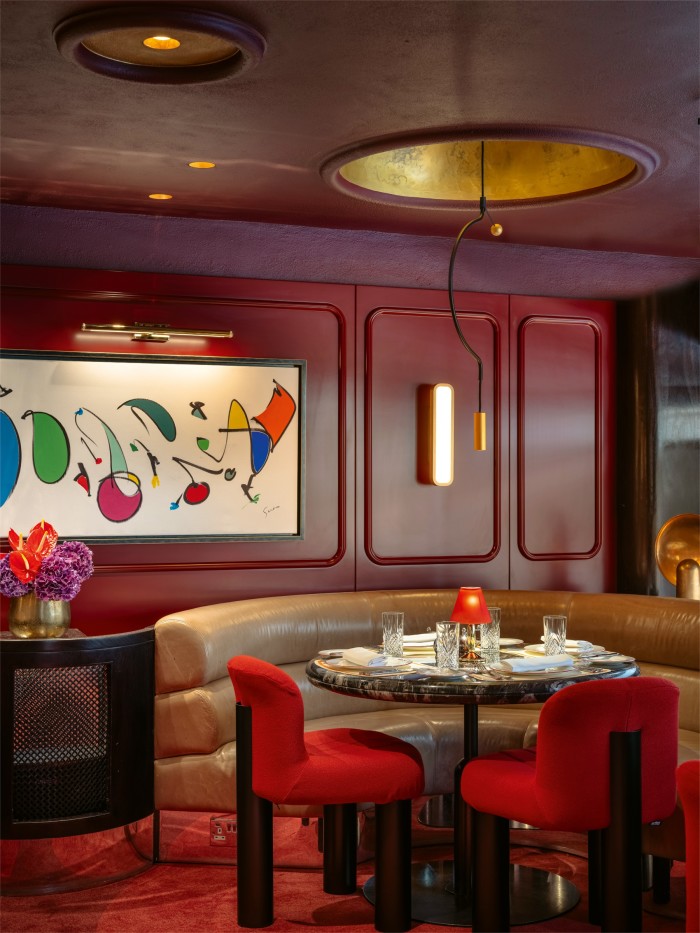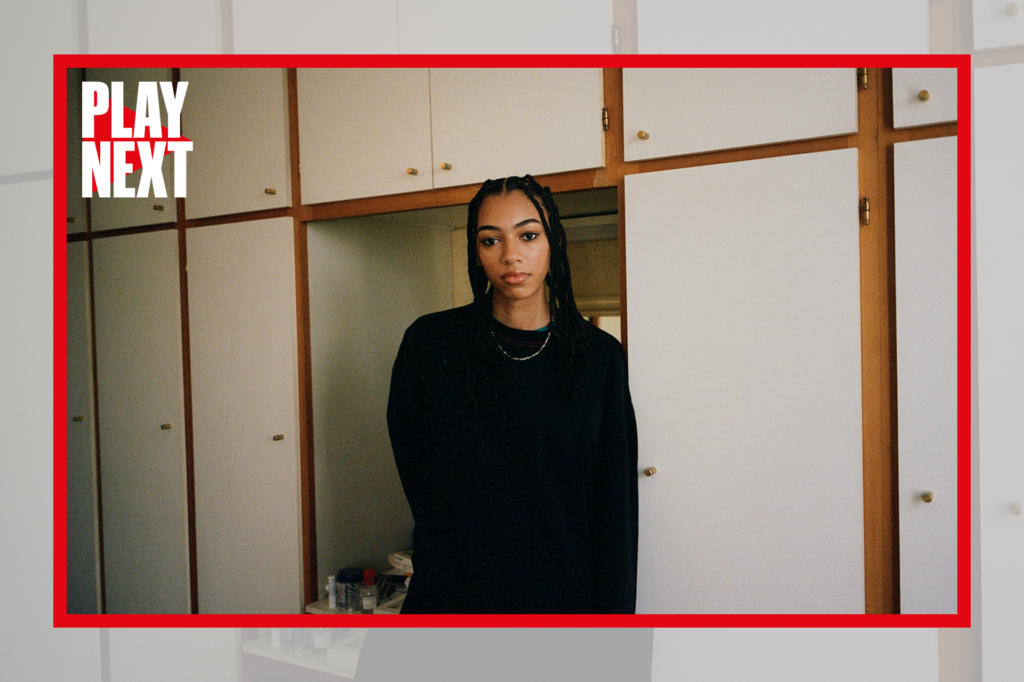
Unlock the Editor’s Digest for free
Roula Khalaf, Editor of the FT, selects her favourite stories in this weekly newsletter.
The announcement was made in August: “Bob Bob is having a baby!” The Bob in question was Bob Bob Ricard, the restaurant group best known for its “Press for Champagne” buttons, whose flagship sits in London’s Soho. By October, Bébé Bob had arrived and was receiving visitors. The resemblance was clear from its flamboyant decor and champagne-filled menu. But unlike Bob Bob Ricard, whose mains include showpiece fish and meat dishes, Bébé Bob would be offering just one option, rotisserie chicken. It was located directly opposite Bob Bob Ricard – a proximity that had been key to its opening.
“We probably would have thought longer and harder had it been elsewhere,” says owner Leonid Shutov, who had toyed with the idea of a rotisserie chicken restaurant for a while, before this prime location became available. The appeal wasn’t operational (the restaurants have different suppliers and different management). It was about making a statement. “It helps us create a bigger presence in Soho,” he says. “Memorability, noticeability and recognition are important in restaurants, because staying top of mind is the name of the game.”
Bébé Bob, across the road from Bob Bob Ricard © Paul Winch-Furness
It isn’t uncommon for restaurants to expand into neighbouring premises, particularly if the restaurant needs additional kitchen space. In 2020, Wilson’s in Bristol took on a second site two doors down. The extra square footage meant the team could finally do more than just daily prep: dry-age meat, develop charcuterie and use produce in ways that made the restaurant less wasteful and more sustainable. As Wilson’s Bread Shop, the site doubles as a bakery and store that “washes its face” says co-founder Jan Ostle, selling bread, coffee and bacon sandwiches.
We never had plans to open a pub, but the building was literally in front of us
Having a holding space for diners was one of the reasons Amy Corbin and Patrick Williams of South London’s Kudu opened their cocktail bar Smokey Kudu a few doors up in 2020. “We were having to send customers to a pub round the corner,” says Williams of the awkward arrangement before. The Kudu collective has since grown to include Curious Kudu (a gallery/private dining room/events space next door to Kudu), Little Kudu (a tapas wine bar that has replaced Smokey Kudu) and Kudu Grill (an open-fire cooking restaurant 20 minutes away by foot). “If the group was stretched out all over London, it would be hard to do the daily rounds,” says Williams, who trained under chef Robin Gill and learned the importance of keeping one’s “finger on the pulse” across multiple venues.
 The Barbary Next Door, Neal’s Yard
The Barbary Next Door, Neal’s Yard  Inside The Barbary Next Door © Susan Bell
Inside The Barbary Next Door © Susan Bell
“Restaurants are a very hands-on business,” agrees Layo Paskin whose London properties include The Barbary and The Barbary Next Door in Neal’s Yard, and The Palomar, The Blue Posts, the Mulwray and Evelyn’s Table on nearby Rupert Street. The last three occupy the same building, a former pub two doors down from The Palomar. “We never had plans to open a pub,” says Paskin, “but because the building was literally in front of us, we started coming up with the concept” of a pub, restaurant and cocktail bar over three floors.
 Bar Pisellino in New York © Bar Pisellino
Bar Pisellino in New York © Bar Pisellino
Fin and Lorcan Spiteri have taken the idea of multiple restaurants within walking distance “one step further”. Round the back of their canal-side eatery Studio Kitchen in Shoreditch are two barges moored to the pontoon playing host to their bistro Caravel and cocktail bar Bruno’s. “Having all our venues in the same place is an operational hack,” says Fin of being able to cook bar food for Bruno’s at Caravel and share the same till system.
 Paco Tapas © Faydit Photography
Paco Tapas © Faydit Photography Via Carota © Cerruti Draime for Via Carota_Magazzino
Via Carota © Cerruti Draime for Via Carota_Magazzino
Across the Atlantic, a trio of establishments from New York restaurateurs Rita Sodi and Jody Williams – Via Carota, I Sodi and Bar Pisellino – have taken up residence like members of a close-knit family on adjacent streets in Greenwich Village. While the neighbouring venues in the Uva group have become a good marker of the evolving scene on the Upper East Side, from the old-school Italian haunt Lusardi’s (which debuted in 1982) to the more casual Uva (which initially opened as a wine bar in 2005), Uva Next Door (a “cocktail-forward dining experience” launched in 2021) and Keys & Heels (a speakeasy disguised as a shoe-repair/key-cutter’s store unveiled last year). Other groupings designed to work in tandem include Quince and Cotogna in San Francisco; the Le Comptoir venues in Paris; and Il Santo, Il Santino Bevitore and S.forno in Florence.
Recommended

For patrons who can’t get enough of a good thing, there is one obvious advantage to sister venues located staggering distance from one another. Peter Sanchez-Iglesias, chef founder of Casa and Paco Tapas in Bristol, reports, “We’ve got quite a few customers who finish up with drinks in Casa or Paco, or do a double dinner, with an early sitting at Casa, then a second at Paco Tapas. It adds an element of fun and they know they’ll get great standards at both.”
@ajesh34
https://www.ft.com/content/6c0be7e4-40e9-4cd2-901b-66db77763360





